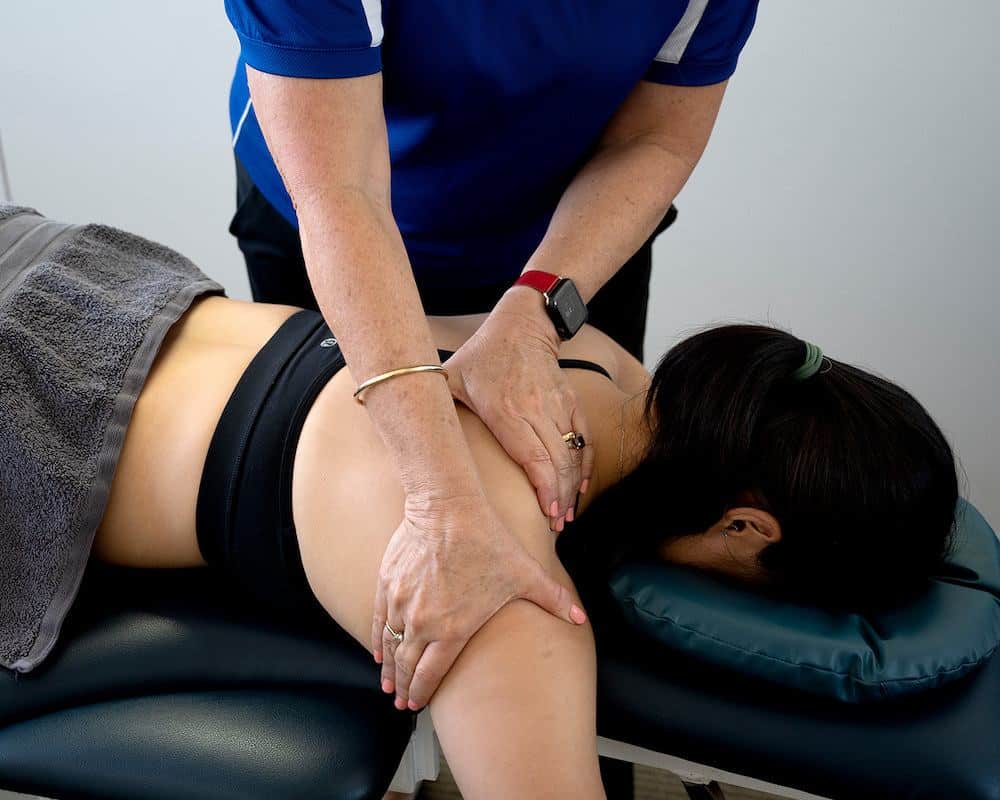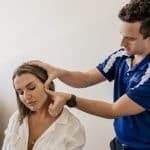Management of Rotator Cuff Related Shoulder Pain
By Graceville Physiotherapist Michael Christensen
7 – 26% of Australians are currently experiencing shoulder pain, a common condition with a reported 67% lifetime prevalence. Shoulder pain is often debilitating and confusing to patients, which often causes a significant reduction in overall quality of life (1). There are many causes of shoulder pain that can of a traumatic or atraumatic onset, of which the following three terms can be helpful to conceptualize the presentation: 1. Stiff and painful, 2. Weak and painful, and 3. Unstable and painful.
Weak and painful shoulders of an atraumatic onset often align with a diagnosis of “Rotator-Cuff Related Shoulder Pain (RCRSP)”, which acknowledges that any of the soft tissue structures of the shoulder can be a potential pain generator (2). This modern diagnosis is congruent with a biopsychosocial approach to health care and is reflective of current evidence that suggests a poor correlation between structural pathology shown on imaging and severity of symptoms, with asymptomatic shoulder abnormalities identified with imaging in up to 96% of people between 40 and 70 years old (3). A diagnosis of Rotator-cuff related shoulder pain is only appropriate if other sources of pain and sinister pathology can be excluded.
The best practice management of shoulder pain is still debatable, although physiotherapy and corticosteroid injections (CSI) are commonly used. A randomized control published in 2021 compared the effects of exercise versus CSI for the management of RCRSP. The trial is the largest of its kind to date (4). 708 adults experiencing their first episode of RCRSP with onset in the past 6 months were recruited and randomized into one of four groups; 1. Progressive Exercise, 2. Best practice advice, 3. CSI couple with progressive exercise, 4. CSI coupled with best practice advice. Those allocated to the progressive exercise group with or without the CSI received up to 16 sessions with a physiotherapist over 6 weeks, whereas the best practice advice groups received a single session with a physiotherapist that provided education on pathology, importance of self-management, an exercise booklet that included advice on when and how to progress exercises. Primary outcomes were pain and disability at 8 weeks, 6 months and 12 months measured with a Shoulder Pain And Disability Index (SPADI). Secondary outcomes measured with a SPADI were fear avoidance, pain self-efficacy, and global impression of change.
At 12 months there was no difference in primary outcomes (pain and disability) between progressive exercise and best practice advice groups. No difference was noted between those who received an injection and those who did not at 6 and 12 months, although there was a small difference at the 8-week follow-up. Secondary outcomes showed no difference between CSI and no CSI groups except at 8 weeks, where injection resulted in an improvement in shoulder pain, shoulder function, health-related quality of life, sleep disturbance, return to desired activities, and global impression of treatment. Interestingly all groups reported improvements at the 12 month follow up, irrespective of group allocation.
The implications of the study suggest that short-term improvements to pain and function can occur with a subacromial CSI, and that physiotherapy is effective in the long term, although progressive exercise was not superior to a single session with a Physiotherapist who delivered best practice advice.
Graceville Physiotherapy practices patient-centred care that is evidence-informed and is considerate of each individual patient and their unique circumstances. Clinical experience shows that some patients display good self-efficacy and will benefit from best-practice advice and self-directed exercises, while others may benefit from more regular physiotherapy. In the instance that conservative care is not effective or does not align with patient values, we will always discuss the option of a CSI and refer as appropriate. In summary, best practice for the management of RCRSP as informed by recent evidence suggests that all patients with RCRSP would benefit from at least one session with a Physiotherapist to provide best practice advice for self-management, and that CSI can provide short term improvements to pain and disability.
Source:
-
- Ackerman, I. N., Page, R. S., Fotis, K., Schoch, P., Broughton, N., Brennan-Olsen, S. L., Bucknill, A., & Cross, E. (2018). Exploring the personal burden of shoulder pain among younger people in Australia: protocol for a multicentre cohort study. BMJ open, 8(7), e021859. https://doi.org/10.1136/bmjopen-2018-021859
- Lewis, J. (2016). Rotator cuff related shoulder pain: assessment, management and uncertainties. Manual therapy, 23, 57-68.
- Girish, G., Lobo, L. G., Jacobson, J. A., Morag, Y., Miller, B., & Jamadar, D. A. (2011). Ultrasound of the shoulder: asymptomatic findings in men.American Journal of Roentgenology, 197(4), W713-W719.
- Hopewell, S., Keene, D. J., Marian, I. R., Dritsaki, M., Heine, P., Cureton, L., … & Cummings, C. (2021). Progressive exercise compared with best practice advice, with or without corticosteroid injection, for the treatment of patients with rotator cuff disorders (GRASP): a multicentre, pragmatic, 2× 2 factorial, randomised controlled trial. The Lancet, 398(10298), 416-428.



